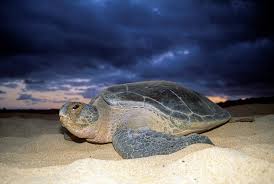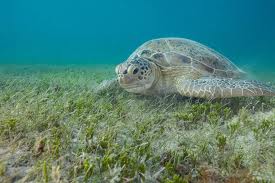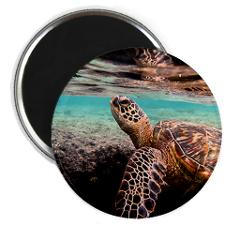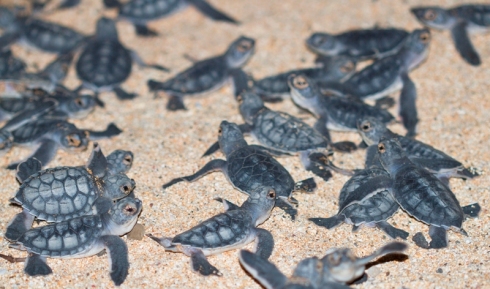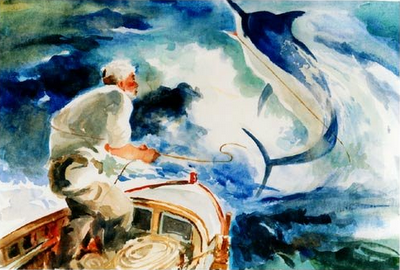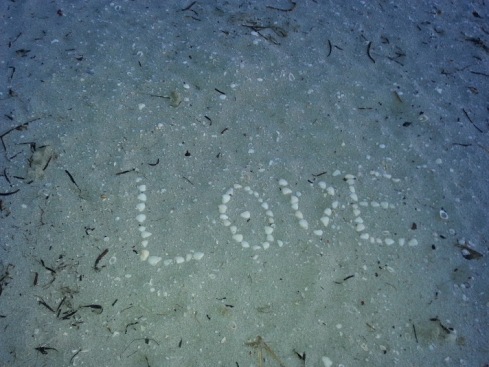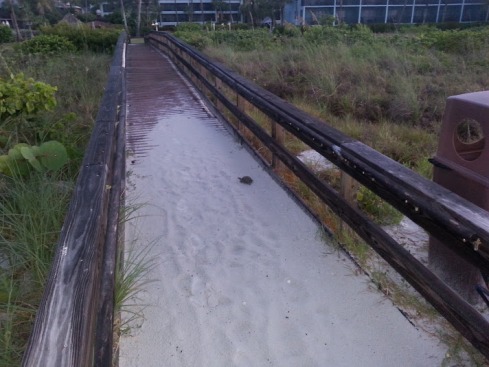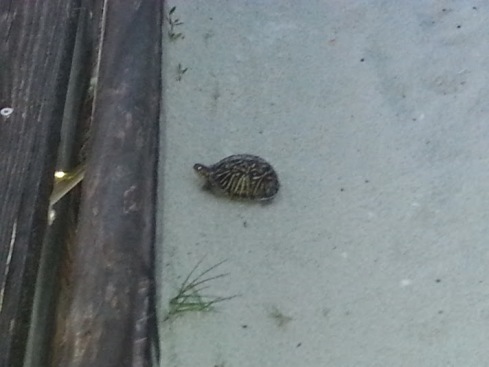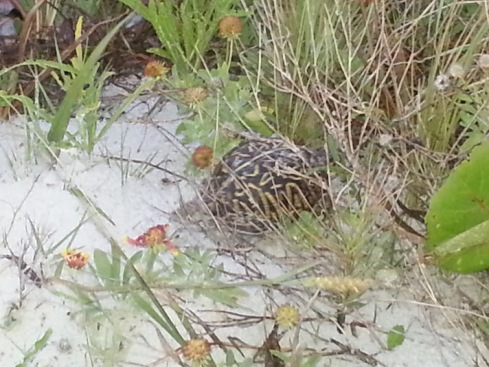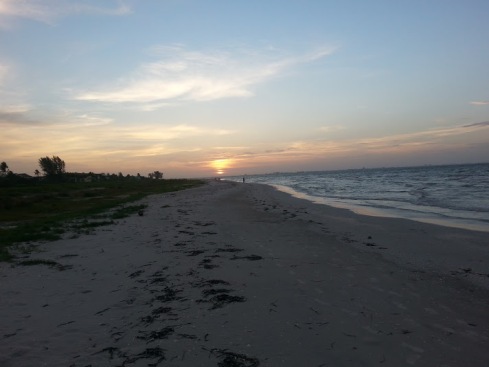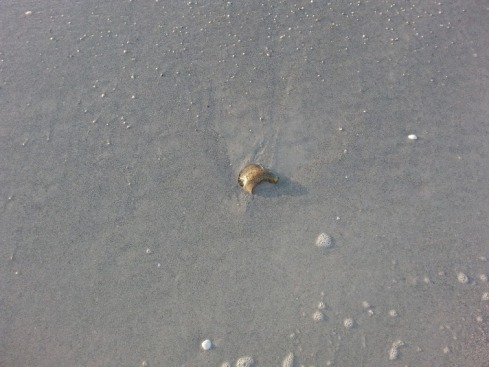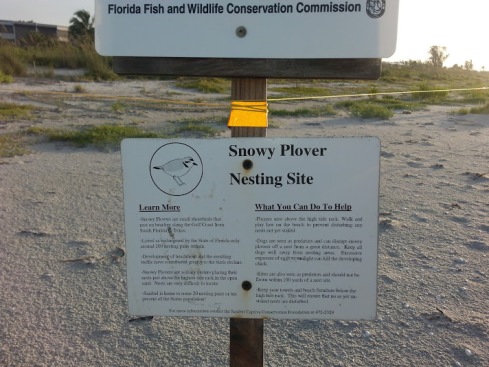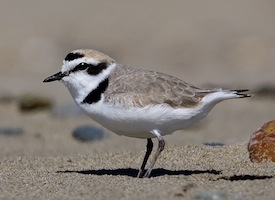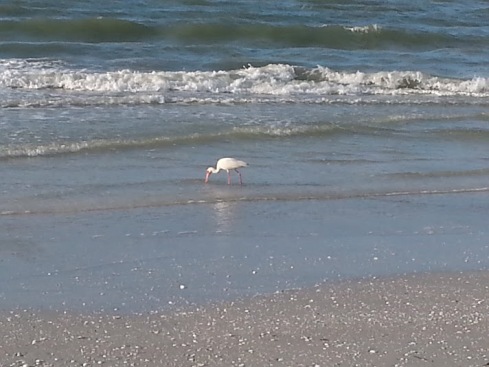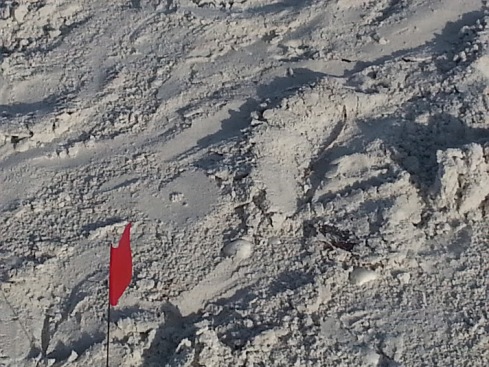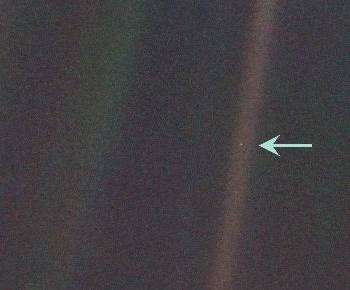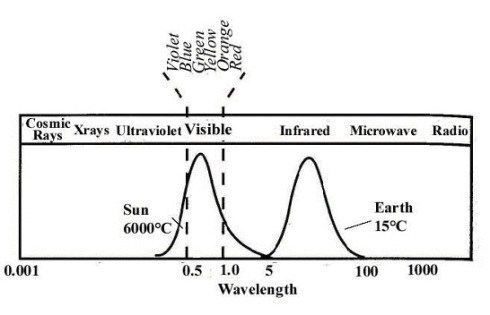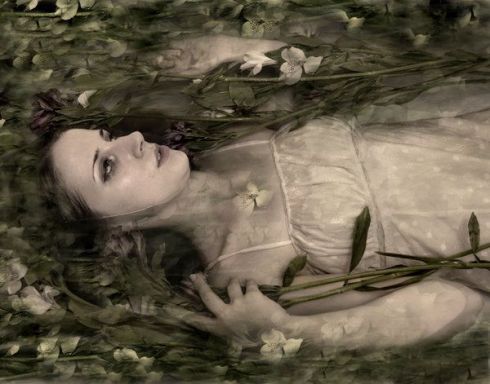You are currently browsing the monthly archive for June 2014.
“When you’re in love, you want to tell the world” – Carl Sagan
It’s time to write about science.
I did a Google search for the phrase “loveliest science story” and found no hits. This astounded me. If Carl Sagan was right, and I believe he was, then we write about science because we love its intricacies, its hidden connections, its poetry. What I’m about to tell you may not be the loveliest science story ever told, but at least now Google will have something to return.
Something less than one million years ago, while our human ancestors in Africa were only just beginning to raise their curious faces to the sky in wonder, a female green sea turtle, heavy with eggs, was blown off course by a prodigious storm. She washed up, quite by accident, on a dark, deserted, volcanic beach, lost and disoriented. Even so, a deep instinct stirred within her. The turtle crawled up the gentle slope of the beach, the ocean waves lapping at her domed shell and powerful flippers. She grunted and strained with the effort of moving her heavy body through the sand. Up until this moment, virtually her entire life she had been buoyed by ocean water in a world without weight. Finally, as she passed the high tide mark, the turtle chose a spot.
Those same flippers, which had demonstrated such power and fortitude in propelling the turtle up the beach, now became supple and delicate digging tools. The turtle deftly moved those flippers in and out of the sand to build a perfect nest, centered by a compacted, pear-shaped egg chamber just large enough to hold her clutch of around one hundred eggs. Soon those eggs came, soft and white, about the size and shape of ping pong balls. They passed from her body and into the nest, one after another, building slow layers below the sand.
As she worked, the mother turtle’s eyes filedl with salty tears. Her salt glands, hard at work protecting her from the salt of the sea, on the beach served a second purpose, keeping the turtle’s eyes clear of the stinging, abrasive sand that flew all around her as she worked. Covering her nest with that same sand, the sand that was once her own surrogate mother and now will cradle the babies she herself will never see, the mother turtle finally crawled back down the beach and disappeared into the surf, into the ocean of space and time that forever separates us from her.
Return to today. Off the coast of Brazil, on the shallow coastal banks covered in the green ocean grass that turtles so love to munch, a female green turtle pauses from her feeding. She swims upward the short distance to the surface, pokes her head above the warm, blue-green water, and takes a deep, filling breath. A scent in the air, the angle of the Sun, the taste of the water, all these things tell her that the time has come for her to return to the beach of her birth. It is time to return to Ascension.
For this turtle is a far-distant descendant of our million-year-old mother; her genes were among those ensconced in those ping-pong-sized eggs on a deserted beach so many generations ago. Like all members of her species, this female feels an inescapable urge to return to her home, to build her own nest, to perform her part in the powerful play to come. She begins swimming east.
Now flash back to four and a half billion years ago. Our planet is a hellish world, partially-molten rocks tortured by radioactive decay and pummeled by hurtling projectiles from the detritus of the newly-formed Solar System. The planet is so hot that solids cannot crystallize; the elements within the remain free to move and migrate, buffeted by chemistry and their own inherent mass. These heavy elements had all been born in the inner turmoil of enormous, dying stars and blown into this galactic backwater by explosions that had lit up the entire galaxy. Now they are about to play a role in a still more amazing story.
The iron and nickel, the most common of the truly dense elements, slowly sink into the young planet’s interior. There, spinning with their own internal motion, stirred by the internal heat of collapse and radioactive decay, ripped and rubbed into positive and negative electrical regions, over long stretches of time in processes that are still but poorly understood, our planet’s core forms a magnetic field that saturates our world to the surface and beyond.
A magnetic field is an extraordinary thing. The result of moving electric charge, it is in fact a manifestation of just how fast, and just how small, the atomic world can be. Any two charged particles feel either an attraction or a repulsion for one another. But when those charged particles move, an additional force arises – a force that comes directly out of Einstein’s special relativity. Electric charges moving relative to one another change time, change space, and result in a “new” force that shows up in our everyday world as magnetism. Every time you hang a note on the refrigerator with a magnet, you are making use of Special Relativity!
But magnets aren’t useful only on refrigerators. They also give creatures like sea turtles a sense that we humans lack. Lying within the head of our female green sea turtle are a few tiny flakes of magnetite, elemental iron in which the charged particles are aligned with one another, and with the ancient magnetic field of the Earth. This built-in compass will help our female turtle make one of the most amazing migrations in the animal world.
Ascension island lies in the center of the Atlantic Ocean, almost 1500 miles east of the Brazilian coast. It bubbled up just over a million years ago from the Mid-Ocean Ridge, the seam along the Earth’s crust where new ocean floor, and the occasional island, are born. Ascension’s very existence, at just over a million years still one of the youngest spots on Earth, shows how dynamic, how energetic, our planet remains even after four and a half billion years. Radioactive decay continues to keep our planet hot, active, churning just below a deceptively placid surface. We humans and turtles live on a young, vibrant, ever-changing world.
Using the cues of ocean currents, the Earth’s invisible magnetic field, and perhaps other clues we still don’t understand, both male and female green sea turtles make their yearly trek from their Brazilian feeding grounds to this tiny spot of land amid miles and miles of empty ocean. Once there, far from any food source or familiar landscape, they mate. The females, who make this trip perhaps once every three or four years, but build five or six nests with each journey, then repeat the drama played out by their distant ancestor, that first mother turtle, heavy with eggs, who crawled up this lonely beach to found a new green sea turtle society.
Blanketed under the nurturing sand, the young turtles grow and change. Everything the turtles need is provided for them within the egg – everything but the air that slowly passes back and forth through the thin, porous, but tough eggshell. As long as the nest remains dry and covered in sand, in about 8 weeks the babies will cut their way out of their shells with a special “tooth” (no turtles have true teeth – this projection is quickly reabsorbed after the babies hatch). For a few days the turtles gather under the sand; then, through some signal known only to the babies, the turtles break from the nest as a group in an event called a “boil.” Down the beach the babies go, doing their best to avoid divebombing gulls and ghost crabs waiting in ambuscade. Finally they reach the surf and the ocean that will be their home.
Many more dangers await; predatory fish, flipper-slashing sharks, and human fishing lines and nets all take their toll. Perhaps one in a thousand will survive to adulthood. The babies that survive the initial onslaught make their way to a unique ecosystem in the center of the North Atlantic Gyre, just north of Ascension.
There the young turtles hide in the seaweed of the Sargasso Sea, eating the tiny crabs and fish they find there. They grow. They learn. They begin to feel the tug of the western Atlantic. When they are large enough, these same turtles will leave their open ocean home and head for the coast of Brazil. There they find acres and acres of shallow water, the perfect environment for turtle grass, that green carpet that covers the ocean floor off Brazil’s north and east coasts. Here the greens take up their adult vegetarian lifestyle, essentially harvesting sunlight from the shallow ocean floor. Living and eating side-by-side with other Atlantic green turtles, these Ascension turtles remain a distinct population by breeding only in the waters surrounding their home island.
And then, when the time is right, these marvels of evolution feel the tug once more and begin their trek to faraway Ascension. It is an island that marks the time, formed by a restless Earth that through its interal churnings creates and maintains that very magnetic field by which the turtles accomplish their astounding migration.
OK, if you read my last post you maybe think I’m insane. Maybe you thought so anyhow. But consider . . .
My radio really did turn on all by itself. That’s not all that surprising, even though it’s never done that before. It has, on many occasions recently, switched from Aux to broadcast right in the middle of a great audiobook passage, causing me to, well, not be kind to my native tongue. So clearly there’s some electrical trouble a-brewing in my onboard communications system.
So here’s my question: what if that had happened at a different moment? What if, instead of gooey, cheesy, pepperoni-ey 😉 pizza, there was an ad for Jesus? (What, Jesus doesn’t buy radio ads? Doesn’t he believe in free markets?) Or a Billy Graham crusade? (What, he’s retired? Well, his son’s still at it, right?) Or some such thing? Would I have been shaken to my core?
I’d like to think not. I’d like to believe that I’d stick to my ideals. Supernatural explanations are always bad explanations. It has nothing to do with odds. It has to do with the nature of explanation. Unlikely things have to happen sometimes – otherwise they wouldn’t be unlikely, they’d be impossible.
Something caused my radio to turn on. That something certainly has a physics explanation – most likely a pretty boring one. The easiest person for me to fool is myself.
So play on, 97.1 The Fan. Anybody else hungry for pizza?
I’d like to tell you about what you might call a mystical experience.
Tonight I was driving on the freeway to get Chinese takeout for dinner. I was in a philosophical sort of mood, so instead of listening to an audiobook, as I usually to, I was talking to myself. The topic was the following: Is it a logical truism that the supernatural cannot exist?
(Like ya do)
The argument, which isn’t crucial for the story, briefly is this. If something exists, it is real. Therefore it has properties (at least the property of existence) that can be characterized. This makes it part of the natural world, and therefore not supernatural. Maybe I’ll write more about this later, but back to the story.
These thoughts got me thinking about God. It seemed to me that the way to think about God was not in the abstract, but inductively, in a practical way. In the same way we can know there is no technological civilization on Venus, we can equally know that there are many gods that do not exist. The sorts of gods, for instance, that suddenly appear before us and say, “I’m God. Worship me.”
Unless, I thought to myself, I’m so blinded by my unbelief that such gods are all around and I just don’t notice them.
The moment I had this thought, my car went over a bump on the freeway. Suddenly my radio turned on all by itself.
What was on the radio?
Are you ready for this, all you unbelievers? It was . . .
a Donato’s commercial!
Mine eyes hath been openéd.
All hail pepperoni and cheese!
OK. Maybe it was a near-misstical experience.
Oh, oh. Didya see what I did there?
On my recent flight to Florida I took a break from reading Moby-Dick and switched to my favorite Hemingway book, The Old Man and the Sea. Maybe it was because I was on my way to the warm, sunny Gulf of Mexico, but after Melville’s overblown descriptions of the deep, dark sea and the deep, dark creatures that dwell within it, Hemingway’s terse yet elegant description of the waters of the Gulf stream were a joy, flowing through my mind like those very waters I approached. I read non-stop during the flight and finished the book (ok, it’s pretty short) just before we landed.
I think there’s a lot to be learned in comparing these two books – not an accident, I think, as Hemingway wrote to a publisher that Melville was one author he was still trying to beat. Did he? Hmmm . . .
Santiago is the eponymous Old Man (I’ve always wanted to use the word eponymous), an aging fisherman who has struck a run of bad luck – 84 days without a fish. His luck has been so bad that he’s lost his helper and his student, a boy named Manolin. Manolin’s father insists the boy join another boat, and so he does so, though he still takes care of the old man each morning and each evening. Once the boats sail, there is nothing Manolin can do to help the old man. For over a month Santiago has gone out alone, with only his oars, his sail, his meager fishing gear – and a lifetime of experience.
Today, a lovely day on a lovely warm ocean in the month of September (“The month when the great fish come – anyone can be a fisherman in May”), Santiago’s luck changes. He hooks a great fish – not just any fish, but the largest marlin the old man has ever seen. If only he had the boy, Santiago could bring this great fish in and change everything. But Santiago doesn’t have the boy. He has only himself.
Santiago is a romantic:
“Fish,” he said, “I love you and respect you very much. But I will kill you dead before this day ends.”
But he’s also a realist:
“He is a great fish and I must convince him, he thought. I must never let him learn his strength nor what he could do if he made his run. If I were him I would put in everything now and go until something broke. But, thank God, they are not as intelligent as we who kill them; although they are more noble and more able.”
To me this passage carries all the weight and all the difference between The Old Man and the Sea, which I love, and Moby-Dick, which still haunts me. Santiago does what he does out of love of life, love of the sea and his part in it, love of the act of living. He realizes that the fish is neither good nor evil – the fish merely is. The fish’s strength comes with no malice, no evil intelligence, no conspiracy with the fates. The fish simply is. Nature simply is. Nature is indifferent to our suffering – and in the end, that in some sense makes nature even scarier, and makes our struggle that much sweeter. We bring meaning into this world. We depend on ourselves, our will, our intelligence, our ability to think through our pain, to overcome our adversity, to remain resolute in the face of defeat. We willingly take on the struggle that the indifferent universe poses. We choose.
By contrast, Ahab wants vengeance – vengeance on an animal that was only trying to defend itself. I’m still torn on the issue of how Melville characterizes Moby Dick. I believe, I think this is true, that Moby Dick is made a monster in the secondhand tales and hearsay, but in the actual flesh (remember we don’t meet the whale in person until the final three chapters of this long and complex book), Moby Dick seems like an animal – clever, yes, but hardly malicious, and graceful, like Santiago’s fish – until finally (out of, I believe, desperation to end the persecution) Moby Dick crushes himself against the Pequod, both sinking the boat and almost certainly killing himself.
If this is really Melville’s opinion of the whale, then Ahab is sadly deranged, and in an interesting way the mirror opposite of Santiago. Ahab sees evil intent where only indifference lies. Ahab, who comes so close to self-realization, self-actualization, self-choice, falls back on the ideas of fate and destiny, God and prophesy, and we as mere pawns in a game whose outcome is already decided. Melville refuses to choose. I simply can’t come to grips with this failure. It haunts me.
Santiago seems at first glance to fail nearly as completely as Ahab. Yes, Santiago does finally kill his fish (hope I didn’t give anything away there), but then the fish is devoured by sharks on the way back home. Santiago ends his journey with nothing but a skeleton, a boatful of ruined gear, and an old and devastated body. But Santiago has won. The boy, Manolin, upon spotting the great skeleton, upon seeing Santiago’s wrecked boat, upon finding the old man exhausted and starved, makes a choice. He will stay with the old man. He will fish with the old man. The old man will teach Manolin all he knows: about fishing; about life; about the struggle against indifferent nature, the struggle to know and test and experience our own selves. And what more could any of us ask for?
Santiago, a great fan of “the baseball” asks Manolin to “think of the great DiMaggio”. I say, think of the great Santiago.
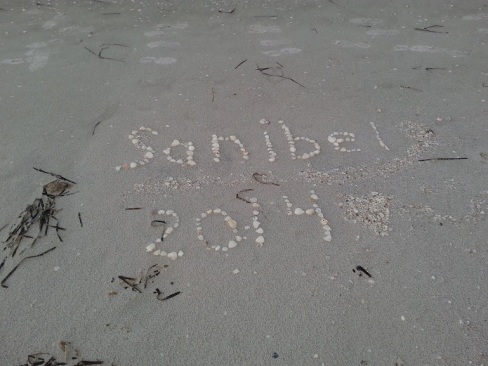
The first thing I learned about the beach on Sanibel Island is you don’t really get it to yourself at 6 in the morning. Lots of crazy beachcombers just like me are already up, wandering the beach before sunrise.
I quickly found a set of turtle tracks, and noticed a little orange flag already in place. I suspect this was a false crawl, as it didn’t go far up the beach and there was no sign of digging at the turnaround point. But who put the flag there?
Nearby I found my first turtle nest of the season, nest 33. I called the phone number on the nest to report the nearby tracks, and spoke with a nice lady named Cari who told me how volunteers mark the tracks, then later other volunteers come out to investigate each set of tracks and rope off those that lead to turtle nests. She thanked me for the call and I moved on.
One of the amazing things about Sanibel is that there are literally shells everywhere – so many that you really can’t avoid walking on some. Unlike some beaches, which squeak as you walk on them, Sanibel crunches. As you can see, the literary arts are alive and well on Sanibel (no, I didn’t write either of those shell messages – I just found them and liked them).
As I moved east toward the lighthouse, I approached one of the many wooden boardwalks that carry pedestrians safely over the delicate dunes. Something on the boardwalk had caught my attention. No, it can’t be. Yes! It was a Florida box turtle.
She didn’t have red eyes, so most likely she was a female. She was trying (probably because of my frightening presence) to get off this exposed bridge and back into the dune vegetation, but her shell was too big to get between the bridge logs. After watching for a while I lifted her up and put her back at the edge of the dune. She took off in a moment and soon was hidden in the vegetation. Who says turtles are slow?
I saw another Florida box turtle later on, also heading for the dunes. Two in one morning; I wonder if they’re really that common?
Sunrise was spectacular. That’s Ft. Myers Beach off to the right. Is there any sight more optimistic than sunrise over the ocean?
After sunrise, as I was lying on the sand watching that second Florida box turtle, I saw a woman with a backpack, picking up trash. (Why would anyone go to a place like Sanibel and then leave trash on the beach?)
Sticking out of the backpack were a handful of flags just like the one marking the sea turtle tracks. I asked her about them; she told me that, yes, she was one of the volunteers marking sea turtle tracks. We talked about sea turtles and the island. I told her I would love some day to do exactly what she was doing, and she said, “Well, then, you will!” I hope she’s right.
On the way back I found what I think was a nudibranch, or sea hare, in the seaweed on the beach. I put it back into the surf, but it washed up again. Finally I took my sandals off and waded out a bit before returning it to the water. I hope it’s OK.
Right near the nudibranch, and my turnaround point for the morning, was a roped-off nesting area for snowy plovers.
I didn’t see any plovers themselves in the nesting area, but here’s a picture of one of them.
On the way back I saw lots of blackbirds gathered around something on the beach. Turns out it was a foot-long shark, dead on the sand. No need to show a picture of that; it was pretty gruesome. More attractive was this white ibis using its elegant curved beak to seek out the plentiful mole crabs.
As I approached our beach access, thinking my first walk was over, I got quite a surprise. There was another of the little flags. There were turtle tracks right outside our building. When I’d started it was too dark and I didn’t have my flashlight on, so I missed the closest set of tracks, right along my walk. A sea turtle had crawled up the beach – I could even see the tracks from our room.
Later I met the SCCF volunteers who mark the nests. Unfortunately, this one turned out to be a false crawl. The mother turtle got all the way up the beach, but then turned around without laying her eggs. Maybe something spooked her, or maybe she just wasn’t ready yet. Despite this false crawl, though, nesting season is in full swing. The volunteers told me they had dozens of tracks still to check and several nests already identified just from Saturday night. So maybe out there in the Gulf right now is a female turtle. maybe that same female turtle, who could build a nest right on our beach this evening.
I’ll let you know tomorrow.
OK, the final Cosmos has come and gone.
I’ll admit it; when Sagan read the Pale Blue Dot piece I teared up. It was beautiful, and I understand why they did it.
If I’d been on the writing team, though, I would have added this:
This image, our tiny, fragile world trapped in a sunbeam, came from a machine no larger than a closet, rocketed away from Earth over a decade before, from a distance of six billion kilometers – or over four hundred thousand earth diameters. One day, a group of conscious bits of matter on that Pale Blue Dot caused some electrons to wiggle back and forth in a particular pattern. Those wiggling electrons made a set of radio signals that bounced off a parabolic dish, shaped and formed and directed in just the right way to cause those radio signals to blast through space until they encountered that closet-sized machine, itself traveling far faster than a bullet from a gun, over five and a half hours later.
Those signals caused the machine to slowly and deliberately turn its carefully-designed camera precisely back toward the Pale Blue Dot, in just the right way to capture the image without blinding itself in the glare of the nearby Sun. After snapping the picture, the machine produced its own electron wiggles, bounced its own radio signals back toward the dot. Another five and a half hours passed and the signal, a planetary self-portrait, arrived back at the Pale Blue Dot, where those same conscious bits of matter processed it, printed it, and stared in wonder.
No other species on that Pale Blue Dot could have taken this picture. No member of this species could have done it alone. Through long, hard experience, through inspired guesses and hard-nosed skepticism, through lofty dreams and gritty reality, human beings learned to take pictures of themselves, even from six billion miles away. That’s pretty cool.
I’m anticipating the final episode of the new Cosmos tonight. As I watch and think about the various political reactions this new Cosmos has inspired, I’m remembering a quote from Jacob Bronowski in the short book of his I recently finished called Science and Human Values:
“Dream or nightmare, we have to live our experience as it is, and we have to live it awake. We live in a world which is penetrated through and through by science and which is both whole and real. We cannot turn it into a game simply by taking sides.”
From Bronowski to Sagan to Tyson.
A few days ago I wrote about Ophelia, the tragic heroine of Hamlet. Tonight the ladies and I returned to Schiller to catch the entire play, rather than just the first half. It was wonderful.
I watched Ophelia closely, particularly in the second half of the play that we’d missed in the previous performance due to the stage malfunction. Throughout Ophelia’s madness, a thought occurred to me.
What if Ophelia is pregnant?
I couldn’t shake this idea, though I had no real evidence for it. A little research showed that I was far from the first to make this guess. There are many allusions to pregnancy, particularly unwanted pregnancy, in the play. I’ll mention two scenes here.
In the cruel scene in which Hamlet destroys Ophelia while both Polonius and Claudius listen, he tells her to “Get thee to a nunnery!” Maybe Hamlet really means a brothel, the common interpretation. But what if he really is referring to a place for unwed women to go when they’ve become pregnant? More cruelly, though, Hamlet complains that “it were better that my mother had not borne me.” A rotten thing to say to the woman you’ve just knocked up – but then, Hamlet’s pretty rotten here. Then there’s this line:
I have heard of your paintings too, well enough;
God hath given you one face, and you make yourselves another:
I first read this as being all about makeup and looking pretty. But could “another” face mean the face of a newborn? Certainly a trick men can’t pull off.
you jig, you amble, and you lisp, and nickname God’s creatures,
Again, I’d interpreted this as youth and exuberance as an enticement to men, but could it also be an allusion to young motherhood, full of baby talk and nicknames for the child?
Not the strongest of evidence, I admit. At the least, though, this reading makes me think about Hamlet wanting to avoid fatherhood along with all the other adult things he wants to avoid. He sees, now, growth and life as “rank”, overgrown, festering, and death as preferable to all of it, if only he did not have bad dreams (dreams of Hell for killing himself).
More telling, I think, are Ophelia’s handing out of flowers. The flowers are not random; they’re incredibly significant. In particular, Ophelia gives to the queen and to herself a flower called rue. Rue means what you think it might mean from the name: regret. But it also has another meaning. Rue is a contraceptive; also it causes abortions.
Ophelia gives some to the queen. Imagine what would happen if the queen gave birth to a son by Claudius. Who would be the next in line for the throne, Hamlet or the new baby? Had he a son by Gertrude, Claudius would have great reason to have Hamlet killed. Ophelia, to the very end here, is trying to protect the man she loves.
But Ophelia also keeps some rue for herself. She tells the queen to “wear your rue with a difference.” (as a contraceptive). For Ophelia, perhaps the rue has a different purpose.
Did Ophelia drown herself to avoid giving birth to a child the world would not accept? A child the evil Claudius would fear and despise? A child Hamlet himself has (knowingly or unknowingly) already rejected with his words? I don’t think Shakespeare makes it clear that this is the case – and he certainly could have in the text. Maybe it was just too shocking. However, there’s enough here about conception, about pregnancy, about childbirth, to elicit some thought, and build yet another layer into an amazingly deep and complex play.
Last night’s Cosmos episode, the twelfth of thirteen, gave a straightforward and understandable explanation of how carbon dioxide warms the Earth. I thought it was very well done.
Naturally, the howling began soon after, as deniers pulled out their favorite misunderstandings and/or misrepresentations of the facts. Everyone is entitled to their own opinion regarding what we should do about carbon dioxide and climate change. Everyone is not entitled to their own facts. The next time a denier goes on about the unsettled science, say this:
Fact: the Earth emits much more infrared that it absorbs from the Sun (why? I’ll explain below)
Fact: carbon dioxide absorbs infrared light. (why? I’ll explain that below, too)
Fact: when carbon dioxide absorbs infrared light, it re-emits a large percentage of that light right back to Earth (this is simple geometry – the atmosphere is not very far above the Earth)
Fact: this re-emitted infrared light adds heat energy to the Earth (this is just physics – all light carries energy, E = hf)
Now, the denier must explain in what weird universe adding heat energy to the Earth doesn’t affect temperature. It really is that simple.
OK, details, just because they’re great science. First, the Earth emits much more infrared than it absorbs from the Sun. The Sun is quite a bit hotter than the Earth, so hot that it glows white-hot. The Sun sends a great deal of visible light toward the Earth.
The Earth glows, too, but it glows in invisible infrared light. Consider that the Earth needs to radiate away the same amount of energy as it absorbs – otherwise the Earth would get hotter and hotter, until it, like the Sun, glowed white hot. Clearly the Earth is not glowing white-hot. Most of the high-energy light from the Sun is absorbed by the Earth and re-emitted as much lower-energy infrared light.
With no atmosphere, that infrared light would just travel out into space. This is what happens, for instance, on the Moon. On Earth, though, the carbon dioxide (and other gases like water vapor and methane) in the atmosphere redirect some of that infrared light back. Why? It’s because of the shape of carbon dioxide.
Consider an oxygen (O2) or nitrogen (N2) molecule:
These molecules are made of just two atoms. Suppose someone asked you to bend this molecule. You can’t bend it in the middle, because there’s no atom there, just empty space. The only way to affect its shape is to move the atoms closer together or further apart. It’s like trying to break a baseball bat by pulling it longways. Pretty hard to do. This is why the air is see-through. Not just infrared light, but even visible light is of too low an energy to vibrate oxygen or nitrogen molecules (actually, blue and purple light do have enough energy to affect the molecules somewhat, which is why the sky is blue).
now consider a carbon dioxide molecule (CO2)
This molecule has three atoms. It can vibrate in a new way. In addition to the really hard direction of pushing and pulling length ways, this molecule can bend in the middle. Just like breaking that baseball bat is a lot easier if you push up in the middle and down on both ends, so the CO2 molecule can vibrate back-and-forth along this shearing direction with a much lower energy input. It turns out that energy level is smack in the middle of the infrared spectrum.
These facts can’t be denied. CO2 does absorb infrared light and send it back to Earth, causing the Earth to heat up. You can have your own opinion regarding what we should do about this extra heat (I have some strange ideas myself), but you’re not entitled to your own facts.
Saturday night the ladies and I went to see Hamlet in Schiller Park. Both girls were enraptured. Sadly, the stage was not as riveted, and fell apart during the first half of the play. After intermission they decided to cancel the second half. We’re planning on going back Friday night.
Alyssa and I agreed to read the play together in preparation for seeing it Friday. I finished this morning, and can’t get one image out of my mind. It is the image of a drowned Ophelia. Her death is for me the true tragedy of the play, the most poignant moment in the manuscript; all the rest feels pointless.
The play begins with the king, Hamlet’s father, already dead two months or more, and Hamlet in the throes of depression over it. We learn by and by that Hamlet and Ophelia had been canoodling (at the very least) well before the king’s death. It’s quite clear to me that their activities involved more than just a few love letters passed under the table in study hall.
Whether or not Hamlet’s depression has had an effect on his relationship with Ophelia isn’t clear. What is clear, however, is that once Hamlet sees his father’s ghost, and is commanded by that ghost to seek revenge for his father’s murder, Hamlet throws Ophelia away like last week’s Frikadeller (I looked it up). Later, Hamlet plays with Ophelia, as much to say that she’s fine for a little hanky-panky, but will never again get to him as she once had in his pre-woman-hating days. Ophelia, who knows she’s given awaythe one thing her society values in a woman to a man now incapable of returning her intimacy, is destroyed.
Later we see Ophelia unhinged. Whether it was Hamlet’s rejection, his later accidental killing of Ophelia’s overbearing father, or a combination of these is never clear, though I have my suspicions. The death of the father (Polonius) is inconsequential. It is the death of Hamlet’s love for her, or what Ophelia took for love, that has ruined the girl. At any rate, in short order Ophelia plays no small part in her own drowning.
Why did Hamlet do this horrible thing to a girl who’d done nothing to him? Two reasons, I think. One, once he knows the truth about his father’s murder at his uncle’s hands, Hamlet recognizes that his life will never be the same. No matter what action he takes (he believes), the simple joy he felt with Ophelia is gone forever. Hamlet, being a child, takes this out on Ophelia out of sheer immaturity. Two, his father’s ghost commanded Hamlet not to visit any harm upon Hamlet’s mother. Hamlet clearly blames his mother for much of what has happened, yet since Hamlet won’t disobey his dead father, he redirects this anger and frustration on the only other female character in sight, Ophelia.
These actions are inexcusable. After this, I didn’t really care what happened to Hamlet, Claudius, Gertrude, or Rosencrantz and Gildenstern (or is it Gildenstern and Rosencrantz?) It is Ophelia’s death that is the tragedy here, a death brought on by a society that valued women for only one thing, and barely for that.
Our own society is far from perfect, but I’m happy in the knowledge that we live in a time when my own daughters have choices that Ophelia could likely never have imagined.
Get thee to a nunnery, indeed. There is something rotten in the state of Denmark, and his name be Hamlet.

